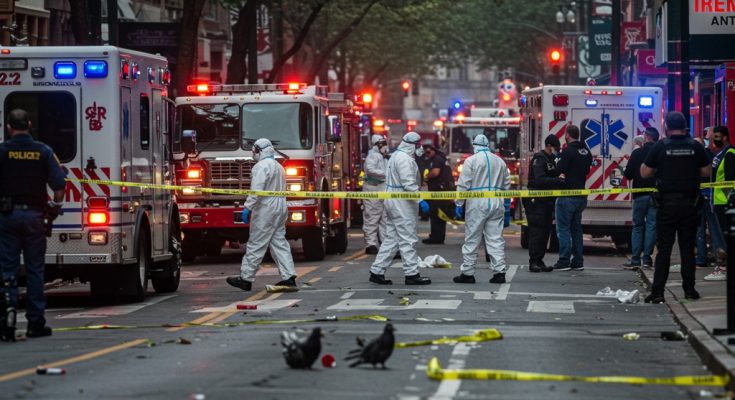When the sirens fade and the initial chaos subsides, another crucial, often unseen, phase begins after an urban tragedy. This is the domain of hazmat teams – professionals equipped not only with protective gear but also with the quiet resilience required to navigate the aftermath of devastation. Their work is a silent process, vital for public health, safety, and the long road to recovery.
Whether dealing with biohazards from a crime scene, contaminants from a structural collapse, or hazardous materials released during an incident, these teams step into spaces that are often emotionally charged and physically dangerous. Unlike the immediate emergency response, their task is methodical, painstaking, and requires absolute precision. Every surface must be assessed, every potential contaminant identified, contained, and safely removed.
The Unseen Gauntlet
Operating in bulky, often stifling suits, respirators, and multiple layers of protection, hazmat technicians perform tasks that are physically demanding and mentally taxing. They work in environments that might hold lingering dangers – unseen pathogens, chemical residues, or structural instabilities. The air itself can be a threat. Their training covers a vast spectrum, from chemistry and biology to decontamination protocols and emergency medical procedures, ensuring they can handle a wide array of hazardous situations.
Their process involves meticulous documentation, careful collection of evidence (if applicable), and the systematic application of cleaning and neutralizing agents. The goal is to render the affected area safe for investigators, recovery workers, and eventually, the community. It’s a delicate balance between thoroughness and efficiency, often performed under intense pressure, away from the public eye but with significant public impact.
More Than Just Cleaning
The work of a hazmat team extends beyond mere cleanup. They are critical links in the chain of incident response and recovery. By mitigating health risks, they protect first responders, healthcare workers, and the wider population from exposure to dangerous substances. Their efforts enable investigators to safely access sites and communities to begin the process of rebuilding and healing.
In the wake of tragedy, while the world focuses on the visible signs of destruction and loss, the silent, dedicated work of hazmat teams ensures that the invisible threats are neutralized. They are the guardians of public health in the aftermath, allowing urban spaces to breathe again, one carefully decontaminated square foot at a time. Their professionalism, courage, and commitment are a quiet testament to the resilience of the human spirit in facing and overcoming adversity.



